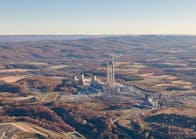DENSO piloting Solid Oxide Cells to create Green Hydrogen at Automotive Parts Manufacturing plant
Japanese automotive parts maker DENSO Corp. wants to launch a pilot project using solid oxide electrolysis of steam to create green hydrogen at one of its facilities.
DENSO would isolate hydrogen—which does not have carbon in its chain—using its own SOEC (solid oxide electrolysis cell) device. The pilot production would be at the company’s Hirose plant and help create lower-carbon power for manufacturing operations there.
Hydrogen can be separated from both water and methane gas by methods including electrolysis and steam reforming. To be considered truly green H2, the electrolyzers must be powered by carbon-free resources such as solar, wind, hydro or nuclear.
SOEC reportedly incorporates technologies derived from automotive components, such as thermal management techniques for controlling internal temperatures, ceramic technology for efficient electrolysis at high temperatures, and ejector technology that recycles unreacted steam within the device.
The plant will conduct a verification test using the produced green hydrogen in a prototype power card line as part of the trial. Externally purchased hydrogen and a new line of SOEC produced green hydrogen will be used together to verify the stability of production and examine the impact of the new line on the quality of power cards.
Starting 2025, DENSO plans to replace the externally purchased green electricity with green electricity generated by solar power generation facilities installed within the Hirose Plant as SOEC's power source.
DENSO aims to establish a model of local production and consumption to take care of the cost risks in hydrogen transportation. DENSO also plans to continue exploring the potential of green hydrogen in automotive manufacturing, contributing to a carbon-neutral society by 2035.





